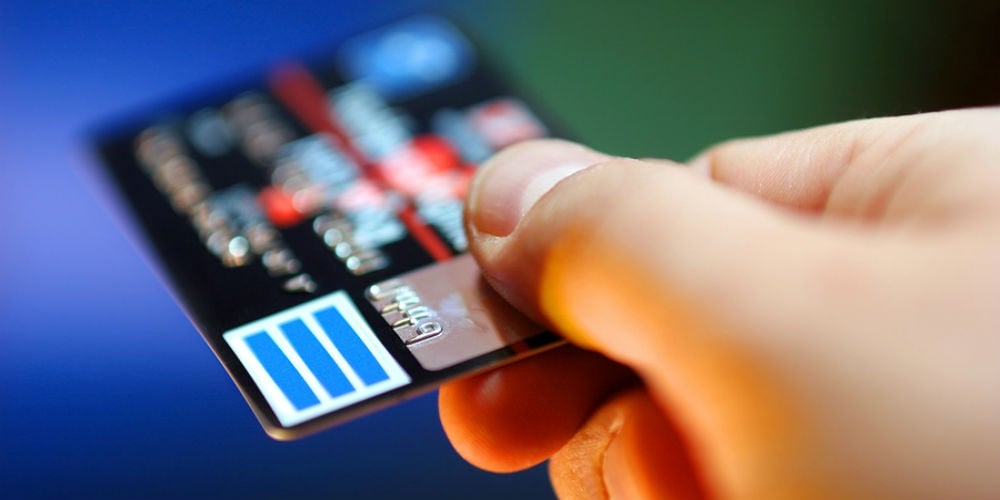The line on credit
Affirming and debunking credit card claims

Believe it or not the line on credit is that in order to accrue it, you have to use it but not to the extent some would think. The debt-averse have a hard time comprehending this theory and the often bandied about notion that credit cards are a necessary tool for building credit, but credit experts help unpack this theory.
According to Jerry Haftmann, CEO and Founder of Pennsylvania-based Universal Credit Services, having a major credit card or two is necessary for establishing credit, especially for young people. How you use the plastic is another matter.
Consider Pete, a fictional young college graduate. Pete was about to start a new job with a decent salary and he wanted to buy a car. The problem was that Pete could not get an auto loan without a co-signer because he had never established credit. His only debt was the student loan he acquired on his own, but it was a government backed loan, which essentially meant he was not granted the loan directly. Pete had never had a credit card either, only a Visa debit card connected to his credit union checking account.
The bottom line was that Pete had no history of managing credit; therefore, he could not qualify for a loan. So, the proud, independent college grad applied for a major credit card. To his surprise, Pete’s application was rejected.
“First time credit applicants usually have an easier time getting a line of credit with a department store,” said Haftmann.
Eager for repeat customers, department and chain store requirements tend to be a bit more lax when it comes to doling out credit cards. Having a store credit card with a small line of credit enabled Pete to get a major credit card within a few months. The savvy college grad did his homework and learned to optimize his score by keeping his utilization low. In other words, he used the card to charge purchases but never used the full line of available credit. Pete was also careful to pay his credit card bill completely each month so as to avoid paying the interest fee.
“Credit utilization is the ratio between your balance and your line of credit,” explained Christopher Palermo, SVP Business Development at Universal Credit Services. Some claim 30% is the ideal utilization percentage but that’s a fallacy. There is no broad or general percentage that applies to everyone because utilization ranges rely on a number of factors and vary from person to person. “Basically, the lower the percentage of use, the better for the score,” Palermo said.
In our scenario, Conscientious Pete charged purchases responsibly and was able to establish credit in a relatively short amount of time. Just a year after graduating college, he had a store credit card, a major credit card, and an auto loan with relatively low interest because he was able to save money and pay cash for 50% of the cost of his car.
Pete shared his experience with friends and even taught his parents a lesson. When he revealed plans to borrow half the purchase price of his car, they offered to loan him the other half interest free. The offer was tempting, but Considerate Pete did not want his parents to create a situation where they would have little or no liquidity, even if it was temporary. Also, Pete had his sights set on being a homeowner before his 25th birthday, and thought a loan would further increase his chances of borrowing a greater sum of money when the time was right.
There are hundreds of scoring models and they vary from loan to loan. The scores lenders use to determine mortgage eligibility may differ from that used for an auto loan. “Sites like Credit Karma don’t tell the whole story,” said Haftmann. “They show consumer scores that are usually higher than what the credit bureaus report. The consumer score you get from free websites is based on the aggregate of how you pay bills. But a mortgage score weighs how you pay bills differently.”
Haftmann said a mortgage lender will first look at how student loans are paid. If the borrower has another mortgage, the way that is paid would be considered next, followed by auto loans, credit cards, and utility bills. Tardy utility bills that end up with a collection agency, however, quickly will crash a credit score.
Regarding Pete’s parents and liquidity, Pete knew his parents were debt-averse but he also knew it was a good idea to have cash available. According to wealth manager and author Thomas Anderson, many people do not have enough liquid cash reserves. In a 2013 interview, Anderson told Bloomberg’s Ben Steverman 15-35% is an optimal asset range (Steverman, The Dangers of Being Debt-Averse. Really. Bloomberg.com/news).
Despite conventional wisdom, Pete was smart to avoid credit card interest fees by not carrying a balance from month to month. Palermo said it’s a myth that paying credit card balances hurts credit scores. “Paying off balances is always a good idea and never has a negative effect, only different degrees of positive effects,” he said. Credit scores fluctuate daily, and “Paying off a credit card, and then closing the account will instantly reduce the amount of credit available, which could be bad based on the total amount of credit one can access.”
Another myth Palermo debunks is that closing stagnant credit card accounts is good. “It’s never good to close credit accounts,” said Palermo. “Every time you close an old account, you erase a bit of your credit history. Even if you don’t use the account, it appears on your report as a line of credit and the amount of years you have that line of credit is factored into your score.” Palermo said credit utilization accounts for 30% of a credit report and payment history comprises another 35%. Closing a credit card account affects usage availability. By the same token, it is important to keep track of every account opened in case of identity theft.
Unfortunately, Posterchild Pete is the exception rather than the rule. Most Americans carry too much debt. According to ValuePenguin.com, more than 38% of Americans carry credit card debt. The popular personal finance site NerdWallet.com reports that figure could be double given the stigma around such debt and reluctance by many to admit to it (El Issa, Erin. 2015 American Household Credit Card Debt Study. NerdWallet.com). In 2015, 39% of Millennials carried credit card debt and even more of their predecessors, 44% of Gen Xers, carried credit card debt (Gonzalez, Jamie and Holmes, Tamara E. Credit card debt statistics. CreditCards.com).
Key Takeaways
- Websites that offer free credit scores provide consumer scores, which are usually higher than scores used to determine loan eligibility
- Having a credit card or two is a solid way to establish c
- redit, provided the account holder uses credit responsibly
- Debit or check cards do not affect credit scores
- Paying off credit card balances will NOT negatively impact credit scores but maxing out credit cards WILL negatively impact credit scores
- Closing credit card accounts will negatively impact credit scores
When it comes to getting a loan, Palermo said, “Having no credit is just as bad as having bad credit.”


